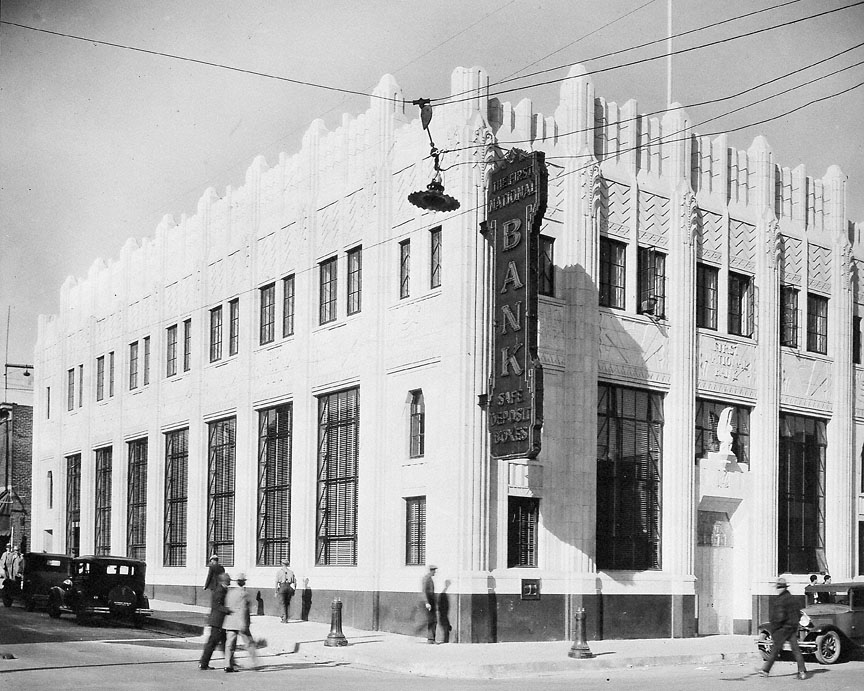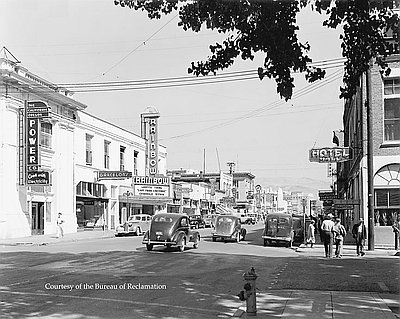- Catalog No. —
- CN 010645
- Date —
- 1930
- Era —
- 1921-1949 (Great Depression and World War II)
- Themes —
- Architecture and Historic Preservation, Arts, Trade, Business, Industry, and the Economy
- Credits —
- Oregon Historical Society
- Regions —
- Southwest
- Author —
- Unknown
First National Bank, Klamath Falls
This photograph shows the new headquarters of the First National Bank of Klamath Falls in November 1930.
At the beginning of the nationwide Depression, the two major banks in Klamath Falls each erected new headquarters. During the preceding decade, the city’s population had skyrocketed, from 4,801 in 1920 to 16,093 in 1930. Klamath Falls was a small trading center for ranchers until the arrival of a railroad from the south in 1907, which initiated a major timber industry in the area. In 1927, Klamath Falls was on a new main line between the Bay Area and Portland, and in 1930 a cutoff opened across northern California giving lumber traffic a direct route to the Midwest.
The Oregon Bank and Trust Company, founded in 1927, opened the six-story Oregon Building on March 3, 1930. Designed by architect G. C. Field of Seattle, it was built of reinforced concrete faced in brick and ornamental terra cotta. It offered medical, dental, and law offices on the upper floors, with a drugstore, jeweler, and the banking office on the first floor. Field adopted the Gothic Revival style for his design, capping the building with terra cotta panels that evoked a medieval college.
The rival First National Bank, founded in 1903, opened its doors on November 16, 1930. This was a three-story structure “suited to [the] climatical conditions” of the region, according to the Klamath Falls Evening Herald of November 14. The architecture was loosely based on classical Greek elements such as the symmetrical façade and fluted pilasters, but the whole was subjected to an Art Deco interpretation characterized as Zigzag Moderne. The entire surface of the building was of gleaming white cast terra cotta on a black granite base. There were “sculptured panels [that] typify the forest and timbering, and the doughty lumberjack with his ax, who has for a background the modern artist’s conception of man’s greatest friend, the sun, and a display of the elements in the form of a stroke of lightning,” according to the Herald. A terra rendition of “the mythological god of the Mayans, named ‘Quetzecoatl’” was perched over the main entrance (Quetzacoatl was an Aztec word; the Mayan analog is Kukulcan). The Herald reporter was unable to effectively connect this figure with the “chief industries of the state of Oregon” but dutifully recorded its presence nonetheless. In a final touch of modernity, the entry included the first revolving door in the city.
First National Bank survived the Depression. The Oregon Bank and Trust was liquidated in 1932.
Further Reading:
Helfrich, Devere. “The Banks of Klamath Falls,” Klamath Echoes 5, 1967.
Written by Richard Engeman, © Oregon Historical SOciety, 2005.

